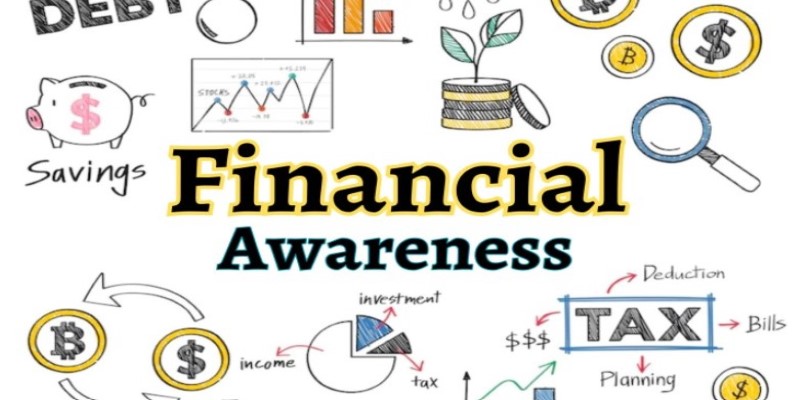Impulse Buying: How To Resist Temptations While Shopping
Impulse buying is a common experience for many shoppers, often leading to regret and financial strain. In a world filled with constant marketing messages and easy access to shopping through various platforms, resisting the urge to buy on a whim can feel nearly impossible. Understanding the psychology behind impulse buying and developing effective strategies to combat it is essential for anyone looking to manage their finances better and cultivate more mindful shopping habits.
Impulse buying is a common experience for many shoppers, often leading to regret and financial strain. In a world filled with constant marketing messages and easy access to shopping through various platforms, resisting the urge to buy on a whim can feel nearly impossible. Understanding the psychology behind impulse buying and developing effective strategies to combat it is essential for anyone looking to manage their finances better and cultivate more mindful shopping habits.
What is Impulse Buying
Impulse buying is defined as unplanned or spontaneous purchasing behavior. This type of buying often occurs in response to emotional triggers, such as excitement, stress, or a desire for immediate gratification. The thrill of finding a great deal of the allure of a shiny new product can cloud judgment, leading consumers to make purchases that they did not intend. Psychologically, impulse buying can be linked to feelings of happiness, the dopamine rush that comes with buying something new, or even societal pressures to keep up with trends.
Retailers are well aware of the impulse buying phenomenon and use various tactics to encourage it. Bright displays, strategically placed items near checkout areas, and limited-time offers are all designed to create urgency and appeal to shoppers' emotions. Online retailers leverage similar strategies through personalized recommendations, flashy advertisements, and easy one-click purchasing options. Recognizing these triggers is the first step in learning how to resist them.
The Emotional Triggers Behind Impulse Buying
Emotions play a significant role in impulse buying. Stress and anxiety can lead people to seek comfort in shopping, while feelings of boredom can drive the urge to buy something new to liven up their day. Similarly, social pressures, such as the desire to fit in or impress others, can lead individuals to make purchases that do not align with their needs or values. By becoming aware of the emotions that drive your shopping habits, you can develop strategies to counteract them.

One effective method is to pause and reflect on your feelings before making a purchase. Ask yourself what emotions are influencing your desire to buy. Are you trying to fill a void? Are you feeling stressed and seeking a quick escape? Recognizing these emotional triggers allows you to take a step back and reconsider whether the purchase is necessary or if it will provide genuine satisfaction.
The Power Of Mindfulness In Shopping
Mindfulness is a powerful tool in resisting impulse buying. Practicing mindfulness means being fully present in the moment and aware of your thoughts and feelings without judgment. When it comes to shopping, mindfulness can help you make more deliberate choices rather than succumbing to automatic reactions.

To incorporate mindfulness into your shopping routine, start by setting a clear intention before you go shopping. This could involve creating a specific list of items you need or setting a budget for yourself. By having a clear plan, you can stay focused on your goals and minimize distractions. During the shopping experience, take a moment to breathe deeply and assess whether you truly need each item in your cart. Ask yourself questions like, “Will this item add value to my life?” or “Can I live without it?” This process can help you sift through unnecessary purchases and promote a more thoughtful approach to shopping.
The Role Of Financial Awareness
Understanding your financial situation is crucial to resisting impulse buying. When consumers are not fully aware of their spending habits, they are more likely to make impulse purchases. Keeping track of your expenses can provide valuable insights into where your money is going and help you identify areas where you might be overspending.

Start by creating a budget that outlines your income and essential expenses. Include discretionary spending, but set a limit on how much you can spend on non-essential items. Regularly reviewing your budget can help you stay accountable and reinforce the importance of making mindful purchasing decisions. Additionally, consider using budgeting apps or spreadsheets to monitor your spending habits closely. Seeing your financial data visually can serve as a reminder of your goals and help curb impulsive behaviors.
Seeking Support From Friends And Family
Sometimes, sharing your goals with friends or family can help you stay on track. Letting those close to you know that you are trying to resist impulse buying can create a support system that encourages mindful shopping. They can help hold you accountable and even join you in your efforts to make better purchasing decisions.

Consider going shopping with a friend who shares your goal of avoiding impulse purchases. Having someone alongside you can provide a different perspective and make it easier to stick to your list. If you feel tempted to make an unplanned purchase, your friend can help remind you of your intentions and the reasons behind your decision to resist.
Reflecting On Past Impulse Purchases
A valuable exercise in combating impulse buying is to reflect on past purchases that you later regretted. Take some time to think about items you bought on a whim that ended up being unused or unnecessary. Understanding the reasons behind these purchases can help reinforce your desire to change your behavior moving forward.

Consider keeping a journal where you record your thoughts on impulse buys, both good and bad. Write about what led you to make the purchase, how it made you feel at the time, and how you feel about it now. This reflection can highlight patterns in your behavior and reinforce your commitment to making more thoughtful choices in the future.
Conclusion
Impulse buying is a common challenge for many consumers, but with the right strategies, it is possible to resist the temptations that lead to unplanned purchases. By understanding the emotional triggers behind impulse buying, practicing mindfulness, setting up barriers, and reflecting on past experiences, you can develop a more intentional approach to shopping.
Cultivating mindful shopping habits takes time and practice, but the benefits are worth the effort. Not only will you save money, but you will also foster a greater appreciation for the items you choose to purchase. In a world full of consumerism, making conscious choices can lead to a more satisfying and financially responsible lifestyle. By being aware of your shopping habits and actively working to change them, you can transform your relationship with shopping from one of impulse and regret to one of intention and fulfillment.